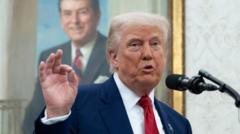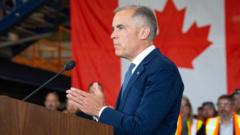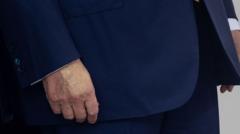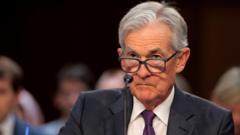The ruling highlights the limitations on presidential powers regarding trade, potentially reshaping economic policies moving forward.
US Trade Court Rules Against Trump’s Tariffs: What Comes Next?

US Trade Court Rules Against Trump’s Tariffs: What Comes Next?
A significant legal setback for Trump as tariffs are overturned by the court.
A US Court of International Trade has issued a pivotal ruling blocking President Donald Trump's sweeping tariffs, dealing a significant blow to the administration's economic strategy. According to the court, the emergency law cited by the White House does not grant the President the unilateral power to impose tariffs on a wide range of countries, emphasizing that the Constitution bestows upon Congress the exclusive authority to regulate commerce with foreign nations.
The lawsuit resulting in this ruling was initiated by the nonpartisan Liberty Justice Center, representing five small businesses affected by the tariffs. This marks the first major legal challenge to Trump's "Liberation Day" tariffs. The three-judge panel determined that the International Emergency Economic Powers Act (IEEPA) of 1977, which Trump referenced to justify the tariffs, does not confer upon him the power to impose such extensive import taxes. The court also invalidated separate tariffs on imports from China, Mexico, and Canada, which were projected to address drug trafficking and illegal immigration issues.
The White House has been quick to criticize the ruling, with Deputy Press Secretary Kush Desai asserting that "unelected judges" should not dictate responses to national emergencies. On the other hand, New York Attorney General Letitia James, who was part of the lawsuit, welcomed the decision. She stated that no president should wield the power to unilaterally impose tariffs, emphasizing that such taxes would place a heavy burden on working families and businesses, likely leading to inflation and job losses.
In reaction to the court's decision, global markets have responded favorably, with Asian stock markets experiencing an uptick as US stock futures rose, reflecting renewed investor confidence. The US dollar also strengthened against traditional safe-haven currencies.
Moving forward, the Trump administration has one week to navigate the bureaucratic processes to suspend the tariffs, although many are currently on hold. The impending appeals process will determine whether the ruling is upheld. Should the higher courts also favor this ruling, businesses burdened by tariffs will be eligible for refunds on their payments, complete with interest.
Market analysts interpret this ruling as a shift away from unilateral tariff imposition, suggesting that the "Oval Office isn't a trading desk" and hinting at a new stability in the macroeconomic landscape.
In summary, Trump initiated broad tariffs on April 2, targeting nearly all US trading partners in a bid to enhance American manufacturing and safeguard jobs amidst an ongoing trade war, especially with China. However, despite the tumultuous trade landscape created by these policies, recent negotiations have led to reduced tariffs from both sides. While the court's ruling represents a significant moment in US trade policy, the ultimate direction will depend heavily on the forthcoming legal challenges and decisions.



















